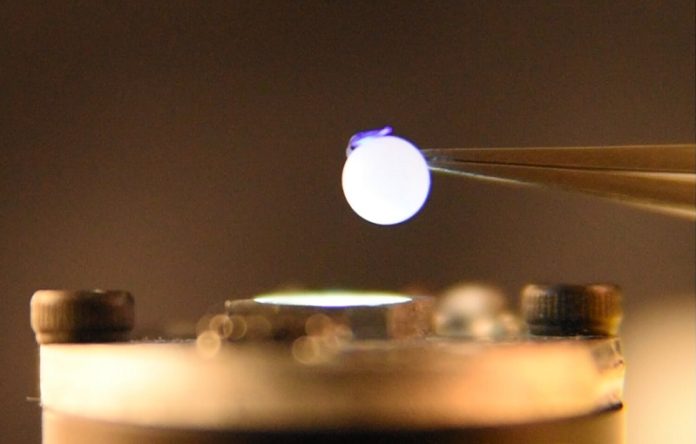
Ever imagine flying a drone without worrying about its battery running out?
Scientists at the University of Colorado at Boulder have taken a big step to make that dream come true!
They’ve created a special material that turns light into movement. This could be a game-changer for things like drones, robots, and even medical devices.
So, what’s the magic behind this? The team, led by Professor Ryan Hayward, created a material made of tiny crystals.
When these crystals get hit by light, they start moving! Imagine tiny dancers that start dancing when you shine a spotlight on them. These “dancing” crystals can do real work like lifting things or making objects move.
Up till now, most machines needed electricity or some kind of fuel to work. But these new crystals cut out the need for that.
They go straight from light to action. It’s like skipping a step and getting right to the good stuff. Professor Hayward says it’s like “cutting out the middle man” of electricity or heat.
This is not the first time scientists have tried to make materials that react to light, but those old materials had problems.
They would often break or were hard to make useful. But these new crystals are tough and reliable.
They react super fast and can even lift things much heavier than themselves! One example they showed was a tiny piece of this crystal, weighing just 0.02 mg, lifting a nylon ball 1,000 times its own weight!
The crystals live inside a material that looks a lot like a sponge. It has lots of tiny holes that help the crystals grow strong and durable.
This also makes the material really versatile, meaning it could be used in many different ways and in various industries.
But there’s more work to do. Right now, the crystals can only bend and unbend. That’s like being able to do just one dance move.
The scientists want these crystals to do more complex “dances,” or movements. They’re also working to make them even more efficient. They want to get as much movement as possible from the light that hits the crystals.
The research team is excited about where this is going. They believe that in a few years, these crystals could replace some of the old ways we power machines.
Imagine drones flying high in the sky, powered only by light beams, or robots doing tasks without the need for big, heavy batteries.
This study was a team effort, including experts from other universities like the University of California Riverside and Stanford University.
While there’s still a way to go, Professor Hayward says this research gives them a “roadmap” for the future. So, who knows? Your next drone might just be powered by the light of the sun or a laser beam!
Follow us on Twitter for more articles about this topic.



